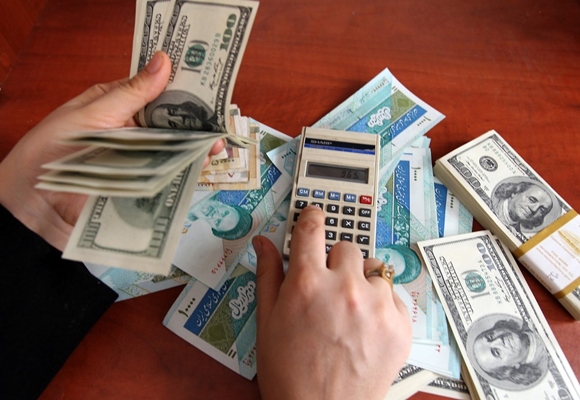The fall in the price of foreign currency started a few days ago and the price observed on July 16 in the market is the same as what it was back in February.
In early February, the price of the US dollar was about 116,500 rials, after which the trend was upwards until May 9, 2019 when it reached about 153,500 rials. However, from that time on, the currency market has plunged.
According to Khabaronline, the monetary and fiscal policies adopted by the bank are said to have helped the rial grow more than 20 percent against the US dollar over the past two months.
The lowest exchange rate seen before February 2019 was in December 11, 2018, when the price of the dollar fell to 97,100 rials. This as both in the days before and after that, the foreign exchange market was bullish.
Some currency market analysts believe the downward trend in prices is likely to continue, and the real price of the dollar is about 80,000 rials.
Iran’s Central Bank Governor, Abdolnaser Hemmati believes that the current situation in the foreign exchange market will continue and exchange shocks are depleted.
“The economic indicators have been improving since two months ago, so inflation and unemployment are also decreasing. The central bank’s set of measures has stabilised the currency market and with the efforts of our exporters, our dependencies on the oil market have shrunk,” added Hemmati.
This as two days ago, he said in the city of Isfahan that the central bank no longer allows the exchange rate to increase, and the government is cutting the price of the foreign currency and increasing the value of the national currency.
According to him, “The United States was seeking to destroy the national currency of Iran and it spoke of 400 to 500 thousand rials for each dollar, but it could not achieve its goals.”
In this situation, Bloomberg analysed in a report the situation of the Iranian currency market saying that the Islamic Republic’s efforts to curb the rial’s slide are starting to work.
Referring to Abdolnaser Hemmati’s comments, it noted that the rial strengthened about 8% in the open market over the past month to 125,450 per dollar, according to prices compiled by Bloomberg from foreign-exchange websites and traders in Tehran.
“The advance is a relief for Iranians who watched the currency plummet more than 50% after U.S President Donald Trump scrapped the 2015 nuclear accord and reimposed sanctions on the nation.”
According to Bloomberg, the central bank sought ways to protect the currency with measures that include setting up a government-run foreign-exchange platform known as Nima to quell the black market and controlling interest rates offered by lenders.
Iran’s President Hassan Rouhani said in a statement on Sunday at a meeting in North Khorasan province that during the past two months, some sort of balance was seen in the exchange rates and inflation.
“It means that if we try, we will succeed, and if we move using all our power, we will fully control the inflation,” underlined Rouhani.
Would the USD’s Slide Continue?
In this situation, the question is that whether the fall of foreign currency will continue or not? And what is the real price of US dollar?
Majid Reza Hariri, deputy president of the Iran-China Chamber of Commerce says the central bank managed to control the foreign exchange market somewhat, although it still remains to reach to the real price of dollar which is 80,000 rials.
“It cannot be argued that macro-management has been ineffective in this sector, so, of course, if it was not for the central bank policies, now the price of the US dollar would have gone up to more than 170,000 rials. As a result, price management has been effective, but it is still far from reaching the real prices. As the minister of finance said, if the smuggling and capital flight were to be prevented, the real price of the dollar would be about 80,000 rials; therefore, the current 120,000 price is 50% more than the real rate,” underscored Hariri.
“Some analysts think the 80,000 for each dollar is unrealistic, because the market function determines the real price. Apart from the fact that there is no mechanism in Iran like the ones existing in some countries, it should be noted that if the illegal demand for the foreign currency, which is used in capital flight procedure, is eliminated, the only demand in the market will be the formal ones and it will lead to lower prices.”
Mohammad-Taqi Fayyazi, who is an economist, says the national currency of Iran was often reinforced by artificial injection of petro dollars, which is not possible anymore. “On the other hand, economic growth will be negative for the second year. There is a probability of a deficit that results in the printing of bank notes and, consequently, devaluation of the national currency. In such a situation, how can one talk about strengthening the national currency in the medium term?”
“I think in the short run and in less than a year, it would be possible to manage the economy and help the price of dollar decrease against rial, but afterwards the situation will change,” he maintained.
